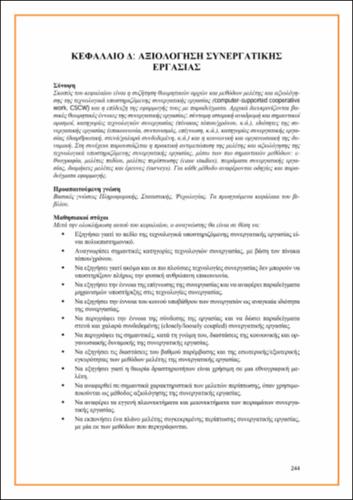| Title Details: | |
|
Evaluation of the User Experience |
|
| Authors: |
Koutsabasis, Panayiotis |
| Reviewer: |
Lepouras, Georgios |
| Subject: | ENGINEERING AND TECHNOLOGY > TECHNOLOGICAL SCIENCES AND ENGINEERING |
| Description: | |
| Abstract: |
After completing this chapter, the reader will be able to:
- Describe the concept of user experience.
- Explain important models of user experience with reference to the assumptions and important aspects described.
- Recognize the general categories of evaluation methods of user experience over time.
- Explain the objectives, process and results produced for a range of expected experience assessment methods: paper prototypes, card sorting, context mapping.
- Explain the objectives, process and results produced for a range of interaction experience evaluation methods: field studies, online experience study, usage data analysis, eye tracking experience evaluation.
- Explain the objectives, process and results produced for a range of experience evaluation methods in time depth: diary studies, experience curve.
- Outline an evaluation plan for some of the user experience evaluation methods listed.
- Identify the conditions for practical application of user experience evaluation methods in specific contexts.
- Explain the advantages and disadvantages of each method mentioned.
- Support the necessity of evaluating the user experience in various application contexts.
|
| Linguistic Editors: |
Kasdagli, Stella Georgia |
| Type: |
Chapter |
| Creation Date: | 2015 |
| Item Details: | |
| License: |
http://creativecommons.org/licenses/by-nc-nd/3.0/gr |
| Handle | http://hdl.handle.net/11419/2768 |
| Bibliographic Reference: | Koutsabasis, P. (2015). Evaluation of the User Experience [Chapter]. In Koutsabasis, P. 2015. User -Centered Evaluation of Interactive Systems [Undergraduate textbook]. Kallipos, Open Academic Editions. https://hdl.handle.net/11419/2768 |
| Language: |
Greek |
| Is Part of: |
User -Centered Evaluation of Interactive Systems |
| Number of pages |
57 |
| Publication Origin: |
Kallipos, Open Academic Editions |

